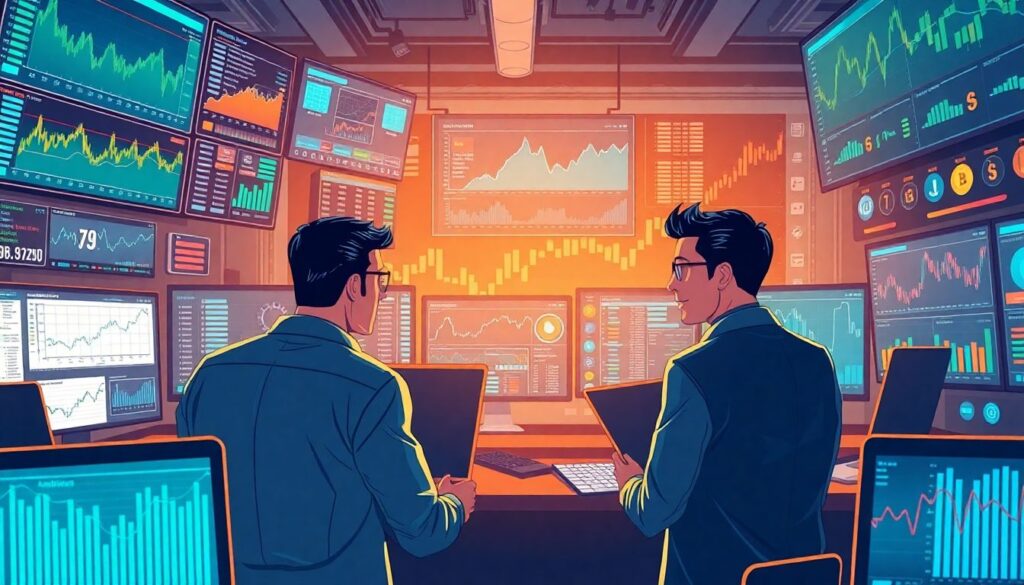Narratives and Liquidity Traps: A Trader’s Survival Guide
Reading the Market’s Story: Why Narratives Matter in 2025
In today’s hyper-connected markets, narratives drive price action just as much as fundamentals—sometimes more. A narrative is simply a story investors tell themselves to make sense of complex data. Think of the AI boom in 2023 or the green energy push of 2024. These weren’t just trends—they were narratives that shaped capital allocation, risk appetite, and even central bank communication.
In 2025, we’re seeing a new wave of narratives: the “post-hyperinflation recovery,” “digital dollar dominance,” and “decentralized AI governance.” These stories don’t just influence traders—they create self-fulfilling feedback loops. Miss the narrative, and you might miss the trade entirely.
Liquidity Traps: The Silent Danger Beneath the Surface
A liquidity trap happens when monetary policy loses its bite. Even with low or negative interest rates, people and institutions hoard cash instead of spending or investing. Traditionally, this was a macroeconomic concept. But in 2025, liquidity traps are showing up in asset-specific pockets—especially in crypto, emerging markets, and certain tech sectors.
Why? Because risk aversion is high, and capital is selective. Traders are parking money in ultra-liquid assets like short-term U.S. Treasuries or stablecoins, waiting for “the next clear signal.” Meanwhile, entire sectors are starved of volume, leading to false breakouts, unreliable technical setups, and extreme volatility from even modest trades.
Spotting a Narrative Before Everyone Else

If you want to survive—and thrive—as a trader in this environment, you need to become a narrative detective. Here’s how:
– Track sentiment cycles: Watch how news is framed. Is optimism building or fading? Are institutions joining the retail crowd?
– Follow capital flows: ETF inflows, whale wallet movements, and sovereign fund reports can reveal shifts before headlines do.
– Listen to policy language: Central banks and regulators often hint at future moves subtly. Read between the lines of FOMC minutes or ECB statements.
These signals help you anticipate where narratives might shift next—before the market fully prices them in.
Escaping the Liquidity Trap: Practical Tips for Traders
Trading in a liquidity-starved environment requires a different playbook. It’s not about being fast—it’s about being precise. Here are key strategies tailored for 2025 markets:
– Reduce position size: In low-liquidity zones, even small trades can move the market. Scale down to avoid unnecessary slippage.
– Use limit orders: Market orders can be dangerous. Set your price and let the market come to you.
– Avoid overcrowded trades: If everyone is long AI microcaps, liquidity can evaporate fast on bad news. Diversify across uncorrelated assets.
Additionally, be wary of “narrative exhaustion.” When a story has been overbought—literally—stay alert. The unwind can be brutal.
Tools of the Trade: What’s Working in 2025

Modern traders need more than charts and earnings reports. Here are tools that help navigate the narrative-liquidity landscape:
– Natural Language Processing (NLP) sentiment scanners: These help parse thousands of news articles and social media posts for emerging themes.
– On-chain analytics: In crypto, platforms like Nansen and Arkham provide real-time insights into wallet behavior and token velocity.
– Macro dashboards: Services that aggregate CPI, GDP, PMI, and central bank commentary into actionable insights are gold for narrative tracking.
Final Thoughts: Adapt or Fade
In 2025, successful trading isn’t just about technicals or fundamentals—it’s about understanding the story the market is telling and identifying when the plot is about to twist. At the same time, liquidity traps demand tactical discipline and a deep respect for risk.
The best traders now act more like behavioral economists and less like traditional chartists. They read sentiment, track money flows, and watch for liquidity signals like hawks. Because when the narrative shifts and the trap snaps shut, only those who prepared will be left standing.
Stay nimble, stay skeptical, and above all—stay curious.

